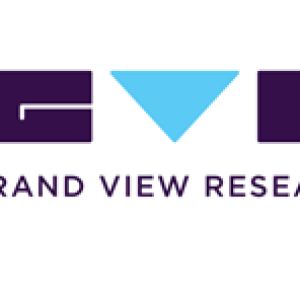Wax Market Expected To Witness A Substantial Growth Of .2 Billion By 2030: Grand View Research Inc.Posted by Mrudula Anil Karmarkar on July 26th, 2022 The global wax market size is expected to reach USD 14.2 billion by 2030, according to a new report by Grand View Research, Inc. The market is expected to expand at a CAGR of 4.3% from 2020 to 2030. The growth is majorly driven by growing inclusion of wax as a performance additive in the plastics industry on account of its rising utilization as water and solvent-based mold release agent. Wax has become one of the critically utilized materials globally with widespread application across multiple industries. It is used in the automotive industry for vehicle polishing, hair removal, packaging applications, and as an additive in the food industry. In addition, it is used in paints and coating industry and printing ink application. Rising demand in various applications, including candles, rubber and plastic processing, cosmetic and toiletries, fire logs, building boards, is likely to propel overall growth in the coming years. High consumption of wax owing to its advantage including UV resistance, anti-caking, excellent insulation, is expected to augment market growth. The stringent COVID-19 lockdown in 2020 induced a downward trend in the market. The recovery in the industrial businesses and activities in the second half of 2020 moderately improved the demand. Additionally, the festive season in the final quarter of 2020 improved the demand from different industries including candles, cosmetics, and packaging. To Request Sample Copy of this report, click the link: https://www.grandviewresearch.com/industry-analysis/wax-market/request/rs1 Wax finds major applications in coating and printing formulations. It is highly utilized in paint, coating, and printing ink industries owing to its features scratch as mark and scratch resistance, rub resistance, and water repellency. It is applied as an additive to a variety of inks including letterpress, lithographic, gravure, and flexographic. Other functions of wax in the coating and ink industry include in blockage, improvement in friction, anti-setting, and anti-sagging. Wax Market Report Highlights
Waxes are the members of organic compounds that are malleable and hydrophobic solids at ambient temperatures. It includes lipids and higher alkanes that are insoluble in water but are soluble in nonpolar, organic solvents. Various wax products including mineral, natural, and synthetic wax are produced from petroleum-based products such as base oil and natural gas, chemicals such as polyethylene, and plants and animals. Paraffin wax is one of the commonly extracted waxes from the oil industry as a by-product, which ensures continuous diligent sourcing and ease of producing the wax. Paraffin product type is broadly utilized in the formulation of candles as it has the unique property to retain both scent and color for an extremely long duration. In addition, paraffin is widely used in skin softening treatment. On the other hand, microcrystalline wax has a higher melting point and is comparatively more flexible than paraffin and therefore, is used in large-scale industrial applications apart from the cosmetic industry. Have a Query? Ask Our Expert: https://www.grandviewresearch.com/inquiry/1499/ibb The key manufacturers of wax are implementing various growth strategies to keep up with the rising demand from various applications. In order to gain further access to the global and regional markets, the companies are integrating forward through the value chain. The industry is marked by the presence of key multinationals that have established their strong regional presence with cosmetics, packaging, and paints and coating manufacturing companies. The market is observed to be strategically evolving with several multinationals involved in mergers and acquisitions, joint ventures, project expansion, and more to establish a sizeable market presence across the globe. One such example would be the acquisition of Puget Sound Refinery by HollyFrontier Corporation for USD 613.6 million in 2021. Some of the prominent players in the wax market include:
Like it? Share it!More by this author |


